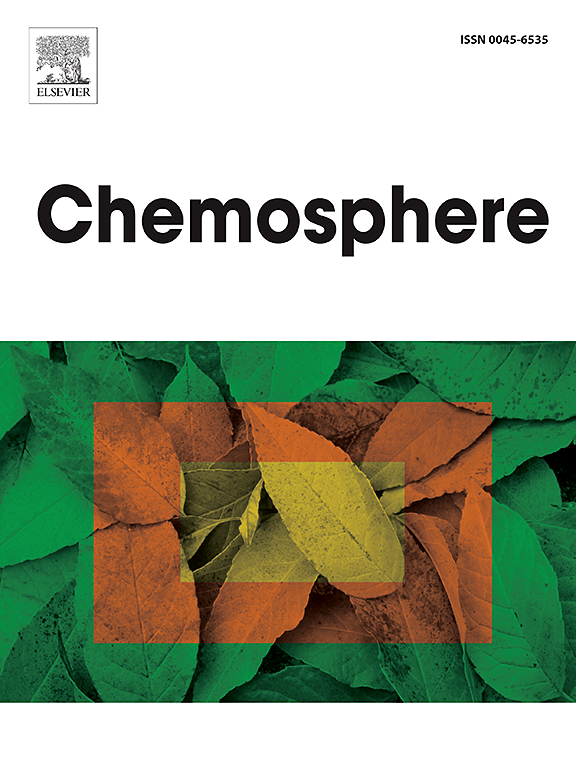Unseen threats in aquatic and terrestrial ecosystems: Nanoparticle persistence, transport and toxicity in natural environments
IF 8.1
2区 环境科学与生态学
Q1 ENVIRONMENTAL SCIENCES
引用次数: 0
Abstract
Although nanoparticles (NPs) are increasingly used in various industries, their uncontrolled environmental release presents a potential risk to water bodies, vegetation and human health. Although previous review studies evaluated the toxicity and bioaccumulation of NPs, their long-term ecological impacts and transport dynamics in aquatic and terrestrial systems remain unexplored. The current review examined the mechanistic bioaccumulation, transport and environmental persistence of NPs, highlighting the need for concurrent risk assessment, regulation and management strategies. The multifaceted nature of nanotechnology necessitates a balanced approach considering both the benefits of NPs and their potential environmental and health risks, requiring comprehensive risk assessment and management strategies. The complexities of NPs risk assessment, emphasizing the unique properties of NPs influencing their toxicity and environmental behavior are critically addressed. Strategies to mitigate NPs' environmental impact include advanced monitoring techniques, regulatory frameworks tailored to NPs' unique properties, promotion of green nanotechnology practices, and NP remediation technologies. Given the complexity and uncertainty surrounding NPs, integration of regulatory, technological, and research-based strategies is imperative. This involves detailed NPs characterization techniques providing basic data for environmental fate prediction models and understanding of biologically relevant risk assessment models to safeguard our environment and public health. In this study, the recent advances in NPs persistence, environmental transport modelling and toxicity mechanisms are uniquely integrated, providing a framework to ecological risk assessment and regulatory approaches.

水生和陆地生态系统中看不见的威胁:纳米颗粒在自然环境中的持久性、运输和毒性
虽然纳米颗粒越来越多地应用于各种工业,但其不受控制的环境释放对水体、植被和人类健康构成潜在风险。虽然以前的综述研究评估了NPs的毒性和生物积累,但它们在水生和陆地系统中的长期生态影响和运输动力学仍未被探索。本综述研究了NPs的生物积累、运输和环境持久性的机制,强调了同步风险评估、监管和管理策略的必要性。纳米技术的多面性要求我们采取一种平衡的办法,既考虑到新物质的好处,也考虑到其潜在的环境和健康风险,因此需要全面的风险评估和管理战略。NPs风险评估的复杂性,强调NPs影响其毒性和环境行为的独特性质。减轻NPs环境影响的策略包括先进的监测技术、针对NPs独特特性量身定制的监管框架、推广绿色纳米技术实践和NPs修复技术。考虑到NPs的复杂性和不确定性,整合监管、技术和基于研究的战略势在必行。这包括详细的NPs表征技术,为环境命运预测模型提供基础数据,并了解与生物学相关的风险评估模型,以保护我们的环境和公众健康。在这项研究中,NPs持久性、环境运输模型和毒性机制的最新进展被独特地整合,为生态风险评估和监管方法提供了一个框架。
本文章由计算机程序翻译,如有差异,请以英文原文为准。
求助全文
约1分钟内获得全文
求助全文
来源期刊

Chemosphere
环境科学-环境科学
CiteScore
15.80
自引率
8.00%
发文量
4975
审稿时长
3.4 months
期刊介绍:
Chemosphere, being an international multidisciplinary journal, is dedicated to publishing original communications and review articles on chemicals in the environment. The scope covers a wide range of topics, including the identification, quantification, behavior, fate, toxicology, treatment, and remediation of chemicals in the bio-, hydro-, litho-, and atmosphere, ensuring the broad dissemination of research in this field.
 求助内容:
求助内容: 应助结果提醒方式:
应助结果提醒方式:


